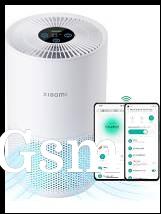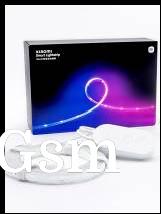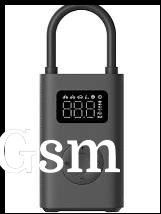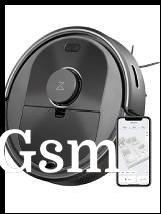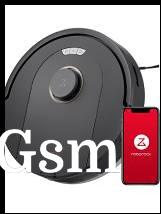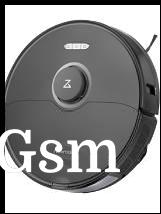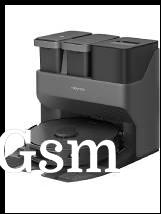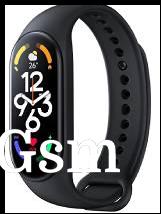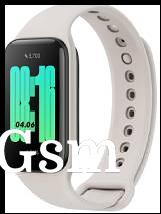The best Prime Day deals on Xiaomi, Redmi and Poco devices

It’s the second and final day of Amazon’s Prime Big Deal Days promo. We have already looked at other brands, time for Xiaomi fans to have a look at what’s on offer. We picked out the best deals from several countries including India.
Note that the promo event in India is actually the Great Indian Festival and the offers do not require a Prime subscription – for everywhere else, you will need to sign up to get these prices.
 USA
USA
The Redmi Buds 4 Active are simple TWS buds with IPX4 rating for sweat and splash resistance. Together with their charging case they can last 30 hours of play time. They have 12mm drivers and connect over Bluetooth 5.3 (Google Fast Pair is supported).
The Xiaomi Air Purifier features a HEPA H13 and a carbon filter and can be used in rooms up to 1,060ft² in size. There is a built-in air quality monitor, which allows for automatic speed control. In quiet mode its noise drops to just 20dB. Replacement filters cost $35.
You can add some RGB lighting to your life with the Xiaomi Light Strip. It measures 6.6 feet and plug right into a wall outlet. You can configure this to be controlled via Apple Home, Google Home and Amazon Alexa.
The Xiaomi Portable Air Compressor 2 can inflate car tires, bike and scooter tires and balls. The maximum pressure is 150 PSI, but there are different presets for the different kinds of tires plus a manual mode. The 2,000mAh battery should be enough to reinflate 10 tires.
While not technically Xiaomi, Roborock’s vacuum robots are fully integrated with Xiaomi’s ecosystem. If you’ve never owned one, you can start with the Roborock Q5, which has LiDAR navigation and multi-level mapping (i.e. it can deal with multi-story buildings, though you have to carry it across floors).
The Roborock Q5 Pro is $60 more but offers a much more powerful suction motor and a larger 770ml dust bin (up from 470ml on the regular Q5). It also lasts an hour longer with 240 minute runtime. Plus, this one has a mop attachment.
If you’ve already have a robot vacuum and want to move up to something more capable, the Roborock S8 has a front-facing camera to detect and avoid obstacles that are too small for the LiDAR sensor. The mop here is more advanced with “sonic mopping”, a vibration technology that helps scrub more thoroughly.
The Roborock S8+ comes with a self-empty dock, which can automatically pull out the dust that has been collected in the robot, so that you only need to empty it out once every two months.
The Roborock S7 Max Ultra is the previous generation model, but it has a more advanced dock – it can empty out the robot’s dust bin, refill its water tank and even wash and dry the mop.
 UK
UK
The Xiaomi 13T flaunts a high-quality display – a 6.67” AMOLED panel with 12-bit colors (Dolby Vision and HDR10+), 2,600 nits peak brightness and 144Hz refresh rate. And unlike many phones in this price class, this is a 1,220 x 2,712px display (rather than FHD+). It has fairly capable cameras too with a 50MP main (with a large 1/12.8” sensor and OIS), a 50MP portrait cam (50mm, 2x) and a 12MP ultra wide.
The phone is powered by the Dimensity 8200 and a 5,000mAh battery with 67W wired charging. Xiaomi is promising 4 OS updates (it comes with Android 13 out of the box) and 5 years of security patches.
The Redmi Note 12 Pro+ is built around its 200MP main camera – the 1/1.4” sensor supports 16-to-1 pixel binning for an effective pixel size of 2.24µm, plus native zoom capabilities. Joining it are an 8MP ultra wide and a 2MP macro cam, plus a 16MP module on the front. The display on this one is pretty good too, a 6.67” 10-bit panel (Dolby Vision, HDR10+) with 120Hz refresh rate and FHD+ resolution. The phone is powered by the Dimensity 1080 and a 5,000mAh battery with super fast 120W charging.
The Poco X5 Pro is a dialed down version of the Note 12 Pro+. It has a 108MP sensor in the main cam (1/1.52” with 9-to-1 binning for 2.1µm pixels), plus the requisite 8MP ultra wide and 2MP macro, plus 16MP selfie. The 6.67” 120Hz FHD+ AMOLED display is essentially the same and the Snapdragon 778G is actually a bit faster than the Dimensity. The 5,000mAh battery supports 67W charging.
Still stuck in the 4G world, the Xiaomi Redmi Note 12 uses a Snapdragon 685, which is a refresh of a refresh – it’s not fast, but it is efficient. The 5,000mAh battery (33W charging) scored a 117h endurance rating, beating the X5 Pro by a few hours and the 5G-capable Redmi Note 12 Pro+ by 29 hours.
The Redmi A2 is good for a kid’s first phone or a backup – it’s quite limited and its Helio G36 and 2GB of RAM run Android 13 Go Edition. The 6.52” HD+ display and basic 8MP camera won’t wow anyone, but there is a large 5,000mAh battery (10W charging), 3.5mm jack and microSD slot are solid features for the price.
That said, for only £23 more you can have full-fledged Android with the Redmi 12C. Its display still has only HD+ resolution, but it is a large panel, 6.71”. Also, it is powered by the more capable Helio G85 with an extra gig of RAM and has a 50MP main camera. The 5,000mAh battery still only does 10W when charging, though.
It’s the last year’s model, but the Xiaomi Smart Band 7 is a solid, cheap pick for those who don’t want a full-blown smartwatch. It has a 1.62” AMOLED display (192 x 490px) with Always On Display, though you won’t get the advertised 14-day battery life with that enabled. The band is rated 5ATM for swimming in the pool, has an SpO2 sensor and sleep tracking.
Alternatively, the Redmi Band 2 has a 1.47” LCD with 172 x 320px resolution. It has a wider aspect ratio, making it easier to show more stats and longer text messages, but it is not as wide as a smartwatch. The band is 9.9mm thick and also advertises a 14-day battery life and 5ATM rating as the Xiaomi band.
 Germany
Germany
The Poco F5 is a fan-favorite and for a good reason – that reason is called the Snapdragon 7+ Gen 2. The chipset offers unrivaled performance in its price class, but the F5 has other things going for it too. Things like the great 6.67” 120Hz AMOLED display (12-bit, FHD+ with Dolby Vision and HDR10+), a 64MP camera with OIS and an IP53 dust and water resistance rating. It also has a fast-charging 5,000mAh battery (67W) that scored a 118h endurance rating.
The Pro model is also available, it upgrades to a flagship chipset (Snapdragon 8+ Gen 1) and QHD+ resolution for its 6.67” 120Hz AMOLED display. Also, the Poco F5 Pro supports both 67W wired and 30W wireless charging for its 5,160mAh battery.
Here’s another Poco pair, this one less prestigious (and cheaper) than the F5 pair. The Poco X5 features a Snapdragon 695 and a 6.67” 120Hz FHD+ display. The camera setup on the back is 48MP wide, 8MP ultra wide and 2MP macro and is limited to 1080p video capture. The 5,000mAh battery supports 33W charging.
The Poco X5 Pro upgrades the screen to a 10-bit panel with Dolby Vision and HDR10+ support. It also has a much more capable Snapdragon 778G chipset – its capabilities include 4K @ 30fps video recording. This comes from the upgraded main camera, which now boasts a 108MP 1/1.52” sensor. Also, the battery charging has been boosted to 67W. Note that the vanilla phone has a microSD slot, the Pro does not. Both have 3.5mm headphone jacks, but only the Pro has stereo speakers.
Still stuck in the 4G world, the Xiaomi Redmi Note 12 uses a Snapdragon 685, which is a refresh of a refresh – it’s not fast, but it is efficient. The 5,000mAh battery (33W charging) scored a 117h endurance rating. It has a 50MP main camera and 8MP ultra wide and can record 1080p video at 30fps. The display is a 6.67” 120Hz FHD+ AMOLED panel.
The Poco M5s has a 6.43” AMOLED display. Good news, it’s an FHD+ panel. Bad news, it has only 60Hz refresh rate. The phone is equipped wit the Helio G95 chipset and a microSD slot. It has a 64MP main camera and 8MP ultra wide with 4K video recording at 30fps (main cam only). A 5,000mAh battery powers everything on board and it recharges at 33W. The M5s managed an impressive 133h endurance rating.
The Redmi 10 2022 costs basically the same and it may be preferred by some for its LCD – a 6.5” 90Hz panel with FHD+ resolution. However, the phone itself is less capable with a Helio G88, 50MP main camera that is capped at 1080p video recording and 8MP ultra wide. Also, the 5,000mAh battery tops out at 18W charging.
 India
India
The Xiaomi 13 Pro is equipped with a triple 50MP camera, including a 1” sensor in the main, 75mm module for zoom (3.2x) and a 115° lens for ultra wide shots. Combined with the powerful Snapdragon 8 Gen 2 and Leica tuning, this is one of the best camera phones of the year. And it has a display suitable for viewing those amazing photos, a 6.73” LTPO AMOLED panel (10-bit, 120Hz) with QHD+ resolution. The battery has 4,820mAh capacity and is quick to recharge both over a wire (120W) and wirelessly (50W).
The phone is pricey, though. If you’re willing to settle for last year’s tech, the Xiaomi 12 Pro is available for around half as much. It still has a 6.73” 120Hz LTPO QHD+ display and a triple 50MP camera, though this time the main sensor is “only” 1/1.28” and the tele lens is shorter (48mm, 2x). The Snapdragon 8 Gen 1 isn’t as efficient as the sequel and it shows – the slightly smaller 4,600mAh battery only lasted 74h in our tests, compared to 115h for the 13 Pro. The charging system is the same, 120W wired and 50W wireless.
If the 12 Pro is still too pricey, the Redmi Note 12 Pro (5G) is an option. It only has one 50MP camera (1/1.56” sensor) with an 8MP ultra wide and no tele. This phone has a 6.67” 120Hz 10-bit AMOLED display and a Dimensity 1080 chipset, plus a 5,000mAh battery with 67W wired-only charging.
The Redmi Buds 4 Active are simple TWS buds with IPX4 rating for sweat and splash resistance. Together with their charging case they can last 30 hours of play time. They have 12mm drivers and connect over Bluetooth 5.3 (Google Fast Pair is supported).
Next up, some tablets. Considering how close the Xiaomi Pad 6 and Pad 5 are in terms of price, it’s easy to recommend the 2023 slate. It has the more capable Snapdragon 870 (vs. 860) and a sharper 11” display (309ppi vs. 274ppi, both with 16:9 aspect ratio). It’s a 10-bit LCD for both, though the Pad 6 display runs at 144Hz, while the Pad 5 display is at 120Hz. The batteries are comparable (8,840mAh vs. 8,720mAh) and both support 33W charging.
For a cheaper option look at the Redmi Pad instead. It too has a 10-bit IPS LCD, a 10.61” 90Hz panel this time around. And while the Helio G99 isn’t as good for gaming as the Snapdragon 870, all three tablets have quad speakers for streaming. The tablet has an 8,000mAh battery with only 18W charging.
If you prefer working on a laptop instead of a tablet, check out the Xiaomi Notebook Pro 120G. It’s a premium 14” laptop with an aluminum body that weighs only 1.45kg. It is powered by the Intel Core i5-12450H (4 performance + 4 efficiency cores, 45W TDP) coupled with 16GB of RAM and a 512GB SSD. The 14” IPS LCD has 2,560 x 1,600px resolution and runs at 120Hz. This 16:10 panel has 300 nits of brightness and 100% sRGB coverage.

Xiaomi Notebook Pro 120G
Core i5-12450H, 16GB/512GB, 14" QHD+ 120Hz IPS LCD₹23,000 off
Read our review
We may get a commission from qualifying sales.



